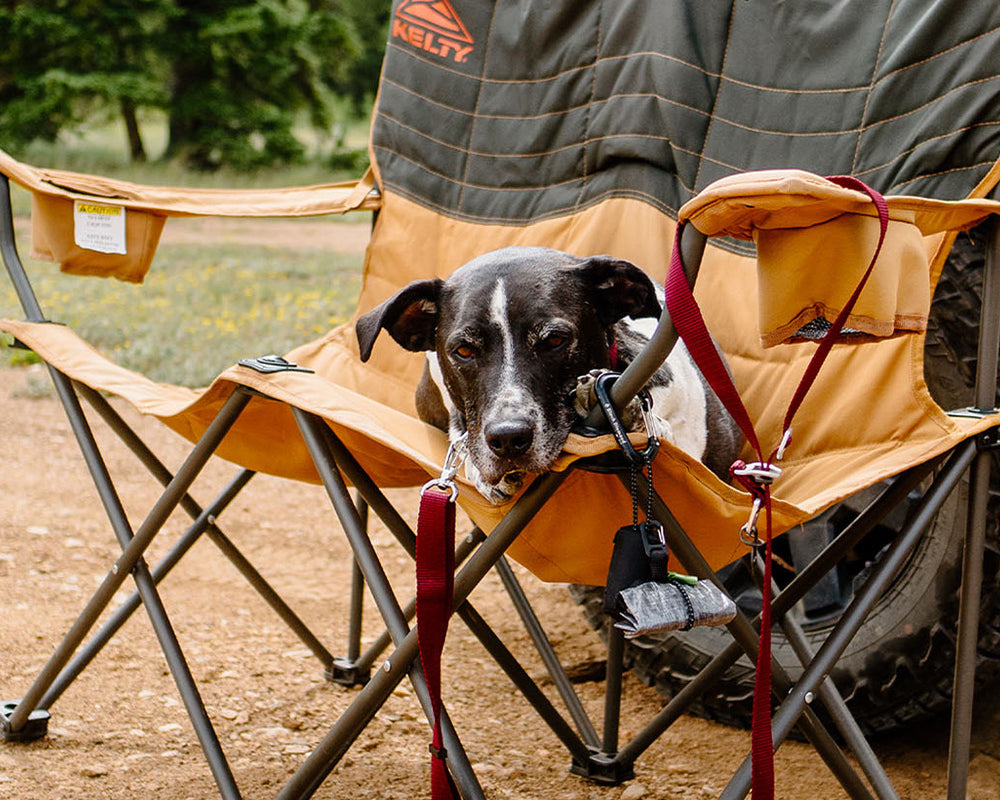You’ve found or are ready to go find your next hiking companion, shotgun rider, or shoreline explorer, but before you bring home your new pup you need to be prepared.
According to expert dog trainer Cesar Millan, “In order to have a well-balanced dog, we have to teach her the house rules, and set boundaries and limitations from the get-go. The message you send your dog the moment she enters your home for the first time is critical, because it immediately establishes the ground rules in your dog’s mind.”
We’ll walk you through the basics of what to get before you bring a new dog into your life and give you tips for the crucial first few weeks with your new best friend.
New Dog Owner Checklist: What to Get Before You Bring Home Your Puppy
Dog toys for your pup
Just like you had your favorite toys and baby blankets when you were little, your new puppy needs toys to play with, love on, and snuggle with. The pup’s first few toys will make them feel comfortable and at home, and they will give them a much needed outlet for sore teeth or excess energy.
Your dog will let you know what kind of toys they like, so it’s best to get a variety at first. Plush squeaky toys are a great place to start, as your puppy can snuggle them, play around with them, and gnaw on them with sore puppy teeth. Opt for toys that have several components, like fuzz for the pup to pull, crinkley parts that make noise, and of course a squeaker.
You should also get a bone for your new puppy to chew on to soothe aching teeth (preferably something soft). Once you get a few toys for your dog, you should be able to narrow down their favorite toy features. Make sure you have a variety to stimulate your puppy’s brain when you need them to play so that you can get some much needed work done around the house.
According to one psychological study, dogs see toys in the same way that wolves see their prey. Instinctually, dogs need toys that have the components of a dead animal, which is why they need the toys to have those varying components to engage them for play session after play session. To keep your puppy interested in the new toys, rotate them out so that the pup plays with a different set every day.
Make sure to constantly monitor your dog’s play to catch any pieces before they swallow them.
Beds, cozy blankets, and a crate
Believe it or not, Costco actually has a superb selection of high quality dog beds. We recommend getting a bed with a bolster around it, and then a flat bed (sometimes also called a crate liner) for your puppy’s crate. You can also throw in a cozy blanket to make the crate an even more comfortable house for your pup.
Having beds for your puppy is essential because they designate spots around the house that belong to them. When the pup feels tired, busy, or needs space, they’ll learn to go to one of their beds to rest or get some alone time.
You’ll want to have the puppy’s crate all ready when you bring them home. According to the Humane Society, “Crate training takes advantage of your dog's natural instincts as a den animal. A wild dog's den is their home—a place to sleep, hide from danger and raise a family. The crate becomes your dog's den, where they can find comfort and solitude while you know they’re safe and secure.”
You should also pick up a playpen for your pup, and introduce playpen time slowly so that the dog feels comfortable, safe, happy, and at home. Make sure to drain your puppy’s excess energy before introducing the playpen.

A collar, leash, tags, poop bag holder and harness
When you pick up your puppy from the breeder or animal shelter you’ll need a collar and a leash. Some facilities won’t let you leave the property without them. The collar will be uncomfortable at first, as your pup has most likely never had to wear one. In order to avoid the constant itching and frustrated looks from your new dog, try an ultra-comfortable collar from the get-go.
Our lifetime collar is made from premium climbing rope and it doesn’t have a buckle so it will be super comfortable for your new puppy. Our warranty also lets you trade it in when the pup outgrows or chews it up, so you truly will never have to buy another collar.
You’ll also need a leash, and similarly to the Atlas collar, the Atlas Pet Co. leash has a lifetime warranty as well. The rope is lightweight and will be comfortable in your hand, and the clip shouldn’t be too heavy for an 8 week old puppy. It’s the best leash out there for your dog, and if it gets beat up or chewed up by little shark teeth, just send it in for a new one.
Wearing a leash and collar will feel very new and can be frightening and uncomfortable for your puppy. Cesar Millan recommends offering up a distraction when leashing up your puppy for the first time. Try attaching the leash to the puppy’s collar when they’re eating or playing with a toy. Then, let the pup prance around the house or yard with it attached. This will help your new puppy get used to the feeling without you pulling on the leash. Make sure you keep an eye on your pup the entire time to keep them safe.
Don’t forget to attach a poop bag holder to the leash! Everyone has a different preference, but we recommend a cloth holder that won’t be too bulky for you.
You’ll also want to purchase a harness to help train your new pup to walk on a leash. According to the American Kennel Club (AKC), harnesses are a great training tool and ensure the safety of your pup. “Harnesses discourage pulling. When your dog is wearing a collar and pulls on the leash, he’s still moving forward, which makes him think the pulling is successful. A harness, whether attached on his chest or between his shoulder blades, redirects him; there’s no reward because pulling doesn’t get him anywhere.”
In terms of tags, most major pet stores offer immediate tags in store so that you can get your new best friend a new tag right away. Be sure to list your phone number and address on the tag. If your dog ever gets out, having your address on their tags makes it easier for someone to return them home. Rather than calling you, they can just drop your dog off at your house immediately after they find them.
Treats, dog food, and a water and food bowl
Treats are essential if you plan to use them for training. Canine behaviorist Amber Drake recommends buying treats with high-quality ingredients. Make sure that the protein is first on the ingredient list, and not a filler. You can also pick up a treat training pouch for use around the house, at the dog park, and while on walks with your pup.
In terms of a great dog food, it really depends on the breed of your new puppy. Consult with your vet for recommendations. Another great place to find a great food for your pup is your local specialty pet store.
Don’t forget to grab a water and food bowl for your puppy as well.
Potty training kit
Potty training is going to be an adventure with your new pup, but luckily there are a few things you can get in preparation.
Puppies are stimulated to pee by smelling their own urine, which will be both useful and challenging. Pee spots in the backyard will help your new puppy learn the proper place to go, but pee spots in the house could reinforce bad habits. To help, we recommend buying a small carpet cleaner if you have carpet throughout your house--it’ll be a lifesaver.
You should also grab a cleaning spray that has special enzymes that neutralize any scent. And, of course, you’ll need poop bags.

A veterinarian and socialization plan
Before you bring home your new puppy, you should find a vet. It’s best to find someone reasonably close to your house, as there may be times you need to take the pup there quickly.
When searching for a new vet, be sure to get recommendations from friends and family who love their vet. Yelp is also a great place to search for a veterinarian for your puppy, as you can read online reviews.
Your vet should make going to their office an amazing experience for your puppy, and they should take pride in that. Be sure to go with someone who is always available to answer questions and concerns, and who is happy to do so.
If you’re unsure a practice is right for you, you can call and ask for more information. Some vets will be more focused on the wholistic health and wellbeing of your pet; others will focus more on traditional medicine. You should decide what works best for you, but the best vets will offer both approaches when treating your pup.
Many vets will offer a “puppy package” which can save you big bucks on first visits, vaccines, microchipping, and altering procedures.
It will be several weeks before your new dog can safely walk where other dogs frequent, as they will have to wait to get all of their shots. You need to figure out a socialization plan for the early weeks, as that time will shape the personality of your dog for their entire life.
Some dog training and daycare facilities will offer a “puppy playtime” socialization where young puppies can safely play together before they have their shots. This is the perfect way to introduce your pup to: separating from you for a few hours at a time, good play habits, meeting other dogs, and making friends. See if you can find a facility like this in your area. Some will offer a training package to go with the socialization.
Now Go Pick Up Your New Puppy!
Thousands of dogs and owners around the world have already fallen in love with what we do and the gear we make, and they all have something in common. At one point, every member of the APC pack experienced what it means to get a dog.
From our family to yours, congratulations on your new best friend.
































